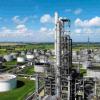As a young engineer a long time ago, I go the opportunity to operate a lot of reciprocating compressors - all of them multi-stage and in various countries. I often wanted to have a flow measurement device on these machines but in my time I never found an installation that had a flow device on a reciprocating compressor nor an engineer that used one, advocated the use of one, or that had tried to install one. I found that I couldn't justify it. That doesn't mean that it can't be done. I personally know that some compressor manufacturers tested some recips for flow delivery - but under very strict and extensive lab operations that involved a lot of piping and pulsation vessels to "even" out the inherent pulsation flow of a reciprocating compressor.
In the field, I found little or no justification to measure or record recip flows. I knew sufficient operational capacity of some compressors by direct (or indirect) measurement of their discharge - such as the filling of compressed gas cylinders or vessels. Today, it might be possible to constantly monitor the flow rate of such compressors using today's much improved and innovative instruments. However, I suspect the inherent "bugaboo" will always be the machine's pulsating flow. You state you want to verify the performance and your flow diagram is very difficult to understand. Your compressor is depicted as 3 separate stages, with the 3rd either bypassed or employed independently. You seem to be compressing a subsequently condensed gas. So why don't you measure the end product over a period of time and that should be a direct (or indirect) measurement of the compression flow capacity.
A recip is a positive displacement machine. It will compress a constant volume of suction gas at a constant speed and without capacity control being activated. The only thing that will deter or lessen the delivered capacity is mechanical wear and tear. Another mechanical item that will decrease capacity is valve failure or leakage - but this is detectable in discharge temperatures, compression ratios, & noise. You have to be aware of valve leaks or failure in order to stop the machine and fix the valve(s). A properly installed and operated recip will produce reliable and steady, constant flow at the design condition while on continuous operation over days, weeks, and months. I operated recips that had 15 to 30 years of previous operation and never had any problems except doing routine maintenance. I was a young engineer at the time so I didn't have the expertise or knowledge at the time. I was very respectful of these workhorses and consequently gave them close attention and timely maintenance. As a result, the various plants I operated produced around the clock at a profit. Can you give us a specific explanation of your operation and why you need to measure the flow rate from a reciprocating compressor?

 FB
FB













